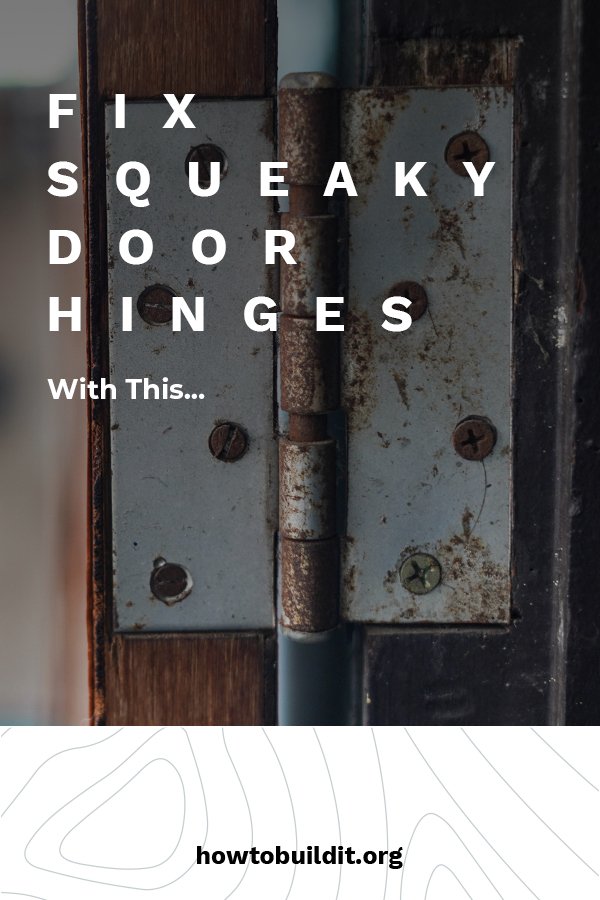
Here’s the thing: noisy hinges aren’t just about the sound—they can hint that your door hardware needs a little love. Maybe the squeak is just because the hinge is dry, or maybe the paint job made things a bit sticky. No matter the brand or style, dealing with a squeaky exterior door hinge is a classic homeowner rite of passage. Let me walk you through how to handle it so your door opens as smoothly and quietly as a well-oiled…well, you know.
Why Do Painted Wood Exterior Door Hinges Squeak?
Squeaky hinges always have a reason—even if it’s not obvious at first. On painted wood exterior doors, paint itself can sometimes make things worse by sneaking into the hinge, gumming it up, or trapping moisture. The problem might be as simple as friction between dry metal parts or as annoying as a sticky build-up from paint, dust, or even pollen.
Think about how often your front door swings open and shut. Over time, the constant movement wears away any lubricant inside the hinge. On top of that, outdoor doors put up with weather swings, humidity, and temperature changes, all of which can make metal expand, contract, or even rust slightly if the paint isn’t perfect around the hinge.
You might be wondering why this happens only on one door, not all of them. It often comes down to how the door was painted, how much it’s used, and what the local weather is like. Painted hinges on wood doors tend to hold onto problems more than plain metal. If you’ve just finished painting your door or notice squeaks after a particularly wet or cold season, that timing isn’t a coincidence.
Tools and Materials Needed for Fixing Squeaky Hinges
Before you jump into squeaky hinge troubleshooting, let’s get your toolkit sorted. The process is pretty simple, but you’ll want the right stuff on hand to avoid making a mess of your paint job.
- Lubricant — Silicone spray is ideal, but some folks like WD-40, 3-in-1 oil, or even a dab of petroleum jelly. Avoid thick grease, which can attract dirt.
- Hammer and a nail or punch — For popping out hinge pins (if needed).
- Cotton rag or paper towels — To catch drips and wipe off excess lubricant.
- Painter’s tape — Optional, but handy for protecting your paint.
- Small brush — If you need to clear away paint or dust from hinges.
Honestly, that’s about it. No code to crack, no high-tech tools—just a few basics from your garage or kitchen drawer. If your door is especially old, or the paint has sealed the hinge edges, you might also need a flathead screwdriver to gently break any paint seal.
Step-by-Step: How To Quiet a Squeaky Painted Hinge Safely
Let’s walk through the most beginner-friendly way to fix that squeaky hinge without ruining your exterior door’s look. The goal is to keep your paint intact and stop the noise for good.
- Protect the door and floor. Put down a towel or some old newspapers under the hinge area. Tape around the hinge with painter’s tape if you’re worried about splashes.
- Identify the squeaky hinge. Open and close the door, listening carefully. Sometimes it’s just the top hinge, sometimes it’s all of them.
- Apply lubricant to the hinge. If you’re using a spray, insert the straw to control placement. Spray right where the pin meets the hinge leaves—these are the moving parts sandwiched between the door and the frame.
- Work it in. Open and close the door several times, letting the lubricant sink in. Wipe away any excess with a rag to avoid drips on your paint. Repeat for each hinge as needed.
- If the squeak continues, you might need to remove the hinge pin. Tap it out gently using a hammer and nail (start from the bottom). Rub a thin layer of lubricant or petroleum jelly directly onto the pin, then slide it back in. Swing the door a few more times to spread it evenly.
You’ll usually notice an improvement instantly, but sometimes stubborn hinges need a repeat round or a bit more elbow grease.
What If the Hinge Is Painted Over or Stuck?
Here’s where painted exterior door hinges get tricky. If there’s a thick layer of paint over your hinges—looking at you, vintage Craftsman doors—lubricant alone might not reach the moving parts. The paint can glue everything in place, making squeaks worse and even making the hinge hard to move.
Careful troubleshooting is key here. Use a small flathead screwdriver or utility knife to gently score the paint line around the hinge edges, freeing it up. Don’t dig too deep or you’ll risk gouging the wood or chipping the finish. Once you’ve cleared the paint away from the moving sections, try lubricating again.
If the hinge pin itself is totally stuck, you might need a bit more persuasion—a rubber mallet helps avoid dents. Tap gently upward. Once freed, clean off old paint and debris, then lubricate the pin before putting it back. Try to avoid removing the whole hinge if it’s painted in place, unless the noise just won’t quit.
Pro tip: If your paint job is new, and the squeak started right after painting, paint in the hinge barrel or pin is the likely culprit. Reseating the pin and cleaning off excess paint is usually the fix.
Choosing the Right Lubricant for Exterior Door Hinges
Not all lubricants are equal, especially for painted wood exterior doors exposed to the elements. You might be tempted to grab whatever’s closest, but the wrong lube can attract dirt, stain your paint, or even cause damage over time.
Silicone spray is the clear winner for most folks. It’s clear, dries quickly, and won’t gunk up with dust or pollen. WD-40 works in a pinch, but it’s really a cleaner—so it helps break up stuck gunk or paint, but isn’t as long-lasting as a true lubricant. For a more old-school approach, 3-in-1 oil is fine, but be sparing. Thick greases or heavy oils should be avoided unless you plan to clean the hinge regularly, since they collect grime that can wreck the look of your paint.
If you have a specialty brand door—like a Pella, Andersen, or Marvin—check their care manual or website. Occasionally, they’ll suggest door-specific products (especially if you’re still under warranty). Still, most standard lubricants work as long as you use them sparingly and wipe up any excess.
How to Prevent Future Squeaks After Fixing the Door
Once you’ve quieted your painted wood exterior door, it’s worth doing a little troubleshooting to avoid this hassle next season. Most squeaks creep back when hinges dry out, rust, or get painted over by accident.
A once-a-year check-up is usually enough. Just open the door wide, look at each hinge, and listen for early noises. Wipe off dust or pollen build-up if you spot any grime, especially after a windy spring. If you’re planning to repaint the door, always tape off the hinges or remove the pins (if possible) so you don’t end up with paint in the moving parts.
Some folks swear by a drop of lubricant every fall or spring; it’s overkill for most, but it sure doesn’t hurt. If you live where winter salt, rain, or humidity are a problem, keeping hinges clean and lightly lubed is the best way to avoid squeaks and stuck hardware.
Alternatives: When to Replace a Squeaky or Damaged Hinge
Most of the time, noise means the hinge just needs a little attention, not a full replacement. But sometimes, a stubborn squeak points to a warped, bent, or rusty hinge—especially on old painted wood exterior doors exposed to years of weather.
Check for visible rust, deep scratches, or hinges that wiggle loose even after tightening the screws. If you see any of those, it’s probably time for new hardware. Choose exterior-grade, rust-resistant hinges in a finish that matches your door. Universal hinges work for many standard doors, but premium brands like Baldwin or Schlage offer styles that pair perfectly with high-end painted entryways.
Swapping out a hinge is a bit more involved: you’ll need to unscrew it from the door and frame, line up the new one, and repaint the fastener heads to match. If you’re not comfortable, a handyman can do it in about 20 minutes.
If a squeaky hinge is driving you truly nuts, replacement is always an option. But honestly, most doors just need a careful touch and the right lubricant.
Final Thoughts: Keeping Your Painted Exterior Door Quiet (and Inviting!)
Squeaky hinges on painted wood exterior doors are a common headache, but fixing them takes just a few minutes and the right touch. Whether you’re dealing with a grand Victorian entry, a modern steel-reinforced door, or an everyday Craftsman model, the steps are the same: protect your paint, use a quality lubricant, and keep those hinges moving smoothly.
Address squeaks early, and you’ll enjoy a front door that whispers open quietly for years—no more screeching every time you come home. There’s something oddly satisfying about swinging a door that’s smooth and silent. It’s a little detail that makes your house feel cared-for and welcoming, right down to its hinges.
